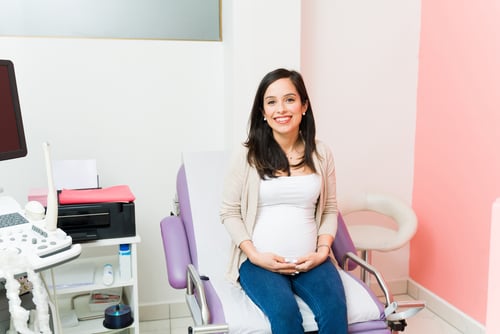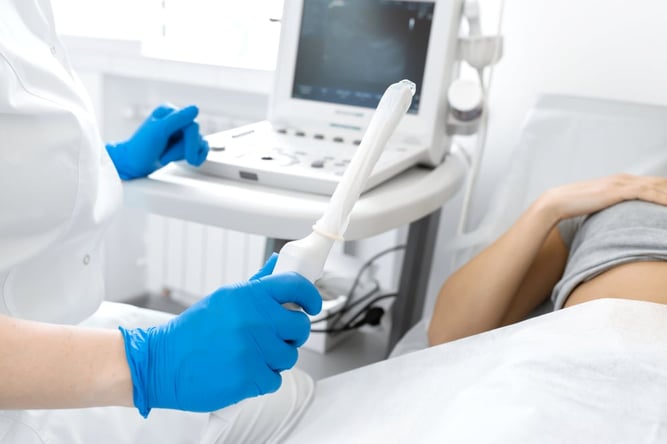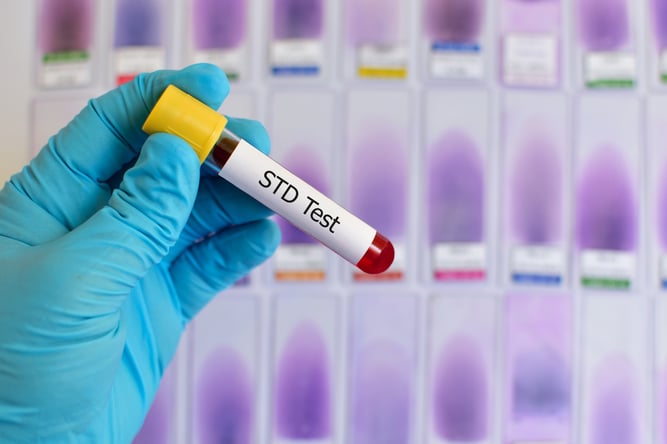Weekly Antepartum Testing
Can weekly antepartum testing decrease near term and term stillbirth? Terrani, MD, F. Gonzales, MD, J. Korman, MD, A. Dillon, RNMS Garden obstetrics and gynecology, New York, NY

Introduction:
In industrialized countries, there is an expectation that every pregnancy will end with the birth of a healthy child. Yet, one fetus out of 200 is stillborn. Sudden fetal death syndrome, also known as stillbirth, continues to be an emotionally devastating outcome for both parents and caregivers. The global burden of stillbirth is estimated at 3.2 million fetal deaths every year worldwide. In the USA, the mortality rate from stillbirths is equal to that from prematurity and sudden infant deaths combined. ¹ Fretts, et al ² conducted a study to compare three strategies for the prevention of stillbirth in women aged 35 years and older, who were provided standard care; namely, no antepartum testing or induction before 41 weeks, weekly testing at 37 weeks with induction after a positive test, and no testing with induction at 41 weeks. This study showed that without a strategy of antepartum surveillance between 37 and 41 weeks, women over 35 years old will experience 5.2 unexplained stillbirths per 1000 pregnancies. Weekly antepartum testing initiated at 37 weeks would avert 3.9 stillbirths per 1000 pregnancies. ²,³. Since the majority of patients experiencing stillbirth are younger than 35 years of age, the purpose of this study was to assess if weekly antepartum testing can decrease stillbirth rate in all age groups as well.
Materials and methods:
Our antepartum testing model (full biophysical profile weekly at 36 weeks on) started with a cohort of 6900 women over 10-year period (2006-2016). Patients who experienced stillbirth prior to the onset of testing were excluded. Biweekly testing was used in high-risk patients using standard indications. A positive test served as an indication for delivery (induction of labor or cesarean section). Women with a negative test remained undelivered until the subsequent positive test or an onset of labor. Control group consisted of 4420 patients in whom antepartum testing was performed using indications proposed by ACOG. The following parameters were analyzed: Stillbirth rate per 1,000 births, total number of inductions to avert a single stillbirth. Stillborns with congenital anomalies and lethal chromosomal and genetic syndromes were excluded. A number of cesarean sections were not included because some were performed on maternal demand. Only deliveries, which took place after 36 full weeks, were included in both groups. All statistical computations were performed using DATA 4.0; Trec Age software, Williamstown, MA). All statistical tests were two-sided and a probability value of <.05 was considered statistically significant.
Results:
Without a strategy of weekly antepartum fetal surveillance between 36 and 41 weeks, women of all age groups experienced 1.6 stillbirths per 1000 pregnancies. For women undergoing weekly testing, the stillbirth rate was 0.9 per 1000.
Obstetrical statistics related to weekly antepartum testing is reflected on table 1 and 2.
Table 1. Effect of unexplained stillbirth risk on outcomes of weekly antepartum testing initiated at 36th week of gestation
| Fetal deaths per 1,000 | 0.9 |
| Fetal deaths averted* | 0.7 |
| Tests per pregnancy | 6.2 ± 2.8 |
| Tests per fetal death averted | 1284 |
| Inductions per fetal death averted | 266 |
Table 2. Individual data on stillbirth in the study group
| Mother’s Age | Gravity | GA | Pathology (if available) |
| 1. 31 | G4P1 | 37 weeks | N/A |
| 2. 36 | G5P1 | 36 weeks | N/A |
| 3. 30 | G2P1 | 35 plus weeks | Placental abruption |
| 4. 30 | G2P1 | 35 plus weeks | Placental abruption |
| 5. 36 | G2P1 | 39 weeks | N/A |
| 6. 41 | G2P1 | 36 weeks | Hemorrhagic vasculopathy |
Table 3. Distribution of stillbirth rates per week of gestation and number of inductions per fetal death averted
Gestation week at initiation of testing**
| Outcome* | 36 | 37 | 38 | 39 |
| Fetal deaths per 1,000 | 0.4 | 0.2 | 0.1 | 0.2 |
| Inductions per fetal death averted | 14 | 18 | 31 | 38 |
***Fetal deaths averted per 1000 pregnancies compared with no testing.
Discussion:
In the USA, the chances of stillbirth is about 1 out of 200 pregnancies for white women and 1 out of 87 for African-American women. In an attempt to address the problem, Fretts et al. ² focused on older women because these women are at higher risk of stillbirth and have fewer reproductive opportunities. They concluded that compared with no testing, a policy of weekly antepartum testing beginning at 37 weeks of gestation in women aged 35 years and older, results in a reduction in unexplained fetal deaths. Labor induction reduces stillbirth, but it also may increase the risk of cesarean delivery, which already is on the rise in this older age group.
Recently, Walker et al. conducted a randomized trial of labor induction in women over 35 years old. The primary outcome was a cesarean delivery. The trial was not designed or powered to assess the effects of labor induction on stillbirth. Induction at or before the due date in women 35 years of age or older may be beneficial because the gestational age at delivery that is associated with the lowest cumulative risk of perinatal death is 38 weeks. However, induction itself also carries risks (e.g., cord prolapse, uterine hyperstimulation, etc.). Results of the trial showed that among women of advanced maternal age, induction of labor at 39 weeks of gestation, as compared with expectant management, had no significant effect on the rate of cesarean section and no adverse short-term effects on maternal or neonatal outcomes.
Our practice to perform weekly antepartum testing started at 36 weeks until delivery in all pregnant women, had been instituted in 2006 because the majority of stillbirths occur in young low-risk patients. Women with known risk factors for stillbirth (obesity, diabetes, growth restriction, smoking, etc.) are routinely subjected to frequent antepartum testing according to ACOG recommendations.
Similar to the results obtained by Fretts, et al. ², in older women we also observed decreased stillbirth rates in all patients of all age groups undergoing weekly antepartum testing. It fell from 1.6 per 1000 births to 0.9 per 1000 births. It's especially important now because of strict policy of elective deliveries at 39 and more weeks advocated by ACOG and enforced by most hospitals. Patients should be aware that in spite of the additional cost of testing and its effects on induction and operative delivery rates, weekly fetal assessment decreases term stillbirth rate in all age groups significantly. In conclusion, the practice of weekly antepartum surveillance should be applied to all age groups in order to decrease near-term and term stillbirth.
































